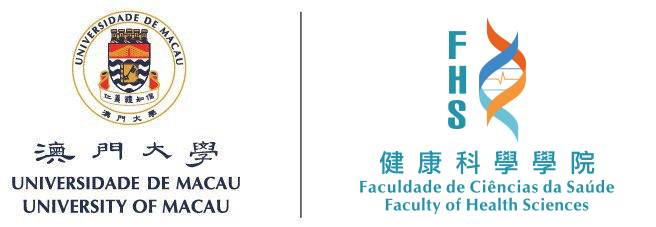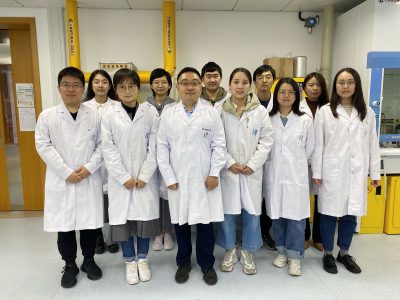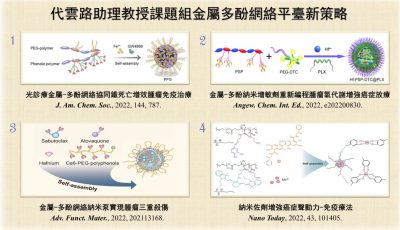A research team led by Yunlu DAI, assistant professor in the Faculty of Health Sciences (FHS), University of Macau (UM), has successfully developed a series of novel metal phenolic nanoparticles to enhance the therapeutic efficacy of various cancer treatments. The research findings have been published in the internationally-renowned journals Journal of the American Chemical Society, Angewandte Chemie International Edition, Advanced Functional Materials, and Nano Today.
Nanotechnology has seen rapid development in recent years, with multifunctional diagnostic nanocomposites for cancer diagnosis, imaging, and treatment being constantly developed and utilised. Polyphenolic materials are a class of phenolic compounds with multiple hydroxyl groups, which have excellent properties such as good biocompatibility, diverse pharmacological activities, and coordination with metals. In this study, the research team modified functional molecules (photosensitisers, imaging molecules, and anti-cancer drugs) with polyphenols to develop multi-functional polyphenol derivative modules that could provide new therapeutic strategies for cancer.
In the tumour microenvironment, the transitional expression of PD-L1 on the surface of exosomes leads to immunotherapeutic failure. The team constructed phototherapy with metal phenolic nanoparticles (PFG), which in combination with photothermal therapy and ferroptosis can enhance immunogenic death of tumours and stimulate anti-tumour immune effects. PFG has excellent near-infrared II fluorescence and photoacoustic imaging performance, which can be used for precise photothermal therapy, while GW4869 in PFG can effectively inhibit PD-L1 expression in exosomes, thus promoting functional T cell proliferation. Considering the precision of the new material with near-infrared II fluorescence, the team has developed a metal polyphenol nanosensitizer (Hf-PSP-DTC@PLX) by loading a hydrogen sulfide donor with an amphiphilic polymer and chelating a polyphenol semiconductor polymer with hafnium to achieve near-infrared II imaging performance and realize diagnosis and treatment integration. The nanosensitizer produces a reasonable dose of hydrogen sulfide, which inhibits mitochondrial respiration and reduces the oxygen consumption of tumour cells, effectively improving the oxygenation of tumour cells.
Currently, the application of hafnium as a sensitiser for radiotherapy has entered into clinical trials, but radiotherapy tolerance is still a problem to be solved. In view of this, the team constructed another hafnium network to achieve a triple kill in tumour therapy, combining radiotherapy, radiodynamic therapy, and immunotherapy. The nanoparticles are combined with anti-PD-L1 antibodies to alleviate tumour tolerance induced by combination therapy. The nanopump is formed by the coordination of hafnium metal and polyphenol and is embedded with atovaquone and sabutoclax to alleviate tumour hypoxia and accelerate apoptosis. Nanopump-encapsulated sabutoclax not only accelerates the activation of apoptotic signals but also reduces glutathione levels in the tumour microenvironment. In addition, the team has also developed metal phenolic adjuvants that can effectively lower glutathione levels to enhance acoustic therapy and activate the cGAS-STING pathway in the presence of manganese ions to enhance the immune response in the body and activate cancer immunotherapy. In conclusion, the above metal phenolic nanoparticles have broad prospects in precise cancer therapy.
Prof. Yunlu DAI is the corresponding author of all the studies, and the first authors are FHS post-doctoral fellows Lisi XIE and Jie LI as well as doctoral students Wei SANG and Hao TIAN. All members of Prof. Dai’s lab made important contributions to the studies, which are supported by the National Natural Science Foundation of China (File no: 32171318 and 32101069), UM (File no: SRG2018-00130-FHS), Ministry of Education Frontiers Science Center for Precision Oncology, the Science and Technology Development Fund, Macao SAR (File no: 0109/2018/A3, 0011/2019/AKP, 0113/2019/A2 and 0103/2021/A), and Shenzhen Science and Technology Innovation Commission, Shenzhen-Hong Kong-Macau Science and Technology Plan C (File no: SGDX20201103093600004). The full version of the research articles can be viewed at: https://pubs.acs.org/doi/10.1021/jacs.1c09753, https://onlinelibrary.wiley.com/doi/full/10.1002/anie.202200830, https://onlinelibrary.wiley.com/doi/full/10.1002/adfm.202113168 and https://www.sciencedirect.com/science/article/pii/S1748013222000329



